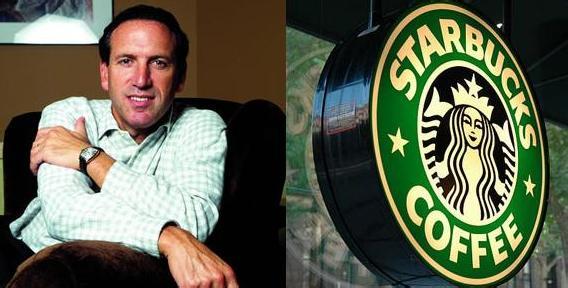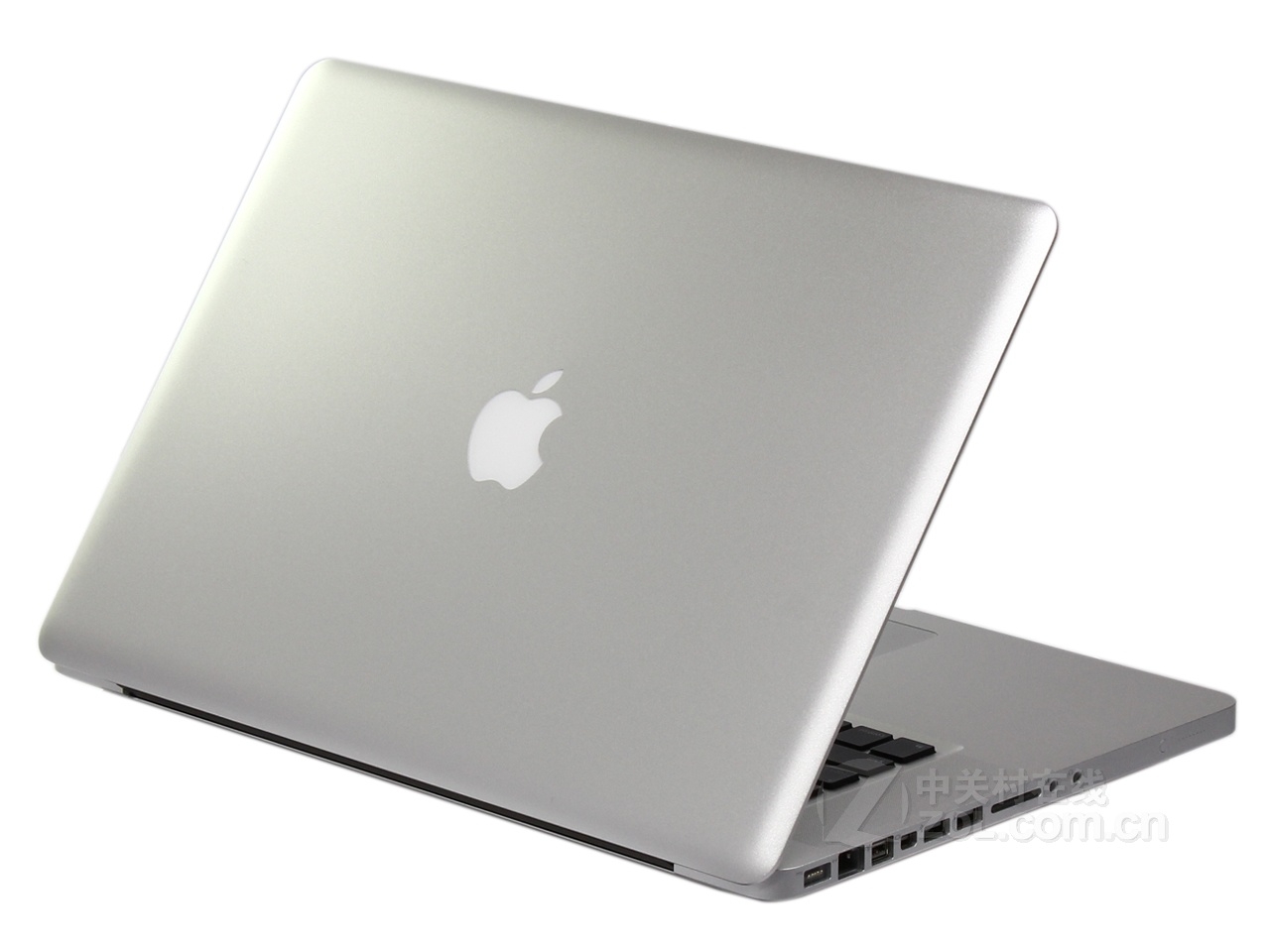Why can a cup of coffee sell so well?

For many young people in the United States and around the world, Starbucks is not just a cup of coffee, but a popular way of life. They lined up quietly, took a cup of coffee from a young, smiling clerk, sat on the sofa, listened to music and enjoyed a little time. Bill is the one who injected this leisurely, fast and warm coffee culture into American life. The "stubborn young man" that Gates father often mentioned-Howard. Schultz (Howard Schultz).
Born in New York's ghetto, he is now a world-renowned business legend and billionaire, and his name is often placed alongside Bill Gates and Steve Jobs.
He is Howard Schultz, who founded the Starbucks coffee empire. In a short period of more than 10 years, he made drinking coffee popular all over the world, becoming a way of life and fashion.
In China, Starbucks has opened more than 1200 stores in 68 cities in China since it opened its first store in Beijing in 1999, making it the world's largest overseas market besides the United States.
Why can a cup of coffee sell so well?
Perseverance and never afraid of failure is the character gene of Schultz's success, which Gates senior discovered a long time ago. Gates Sr. likes this fellow-townsman very much and often praises Schultz in front of his son.
Before retiring, Gates Sr. was a partner in one of the largest law firms in town, which happened to be Schultz's legal representative. At that time, Schultz was just an enterprising young man who wanted to develop the coffee industry. Rarely mentioned, in 1987, Schultz finally raised enough venture capital to buy all shares in Starbucks and began to let go of his dream, and the lawyer who made the deal was Bill Gates senior. Gates senior recalled: "Schultz has a rare talent, he is tenacious and decent." He is a legend. "
One day in 2011, Howard Schultz was sitting on a bus browsing the streets of Beijing. For him, every time he visited a city, he had to see the local Starbucks for himself. He suddenly turned his head and asked one of his Chinese colleagues, "how many Starbucks do you think there should be in Beijing?"
The public relations manager suddenly became at a loss. She had no idea that CEO would throw such a question. After a brief ideological struggle, she replied cautiously, "maybe 200." Schultz laughed at her and said, "you are so conservative."
Schultz and his Starbucks first became famous in 1999, when Starbucks found a partner to open its first store in Beijing's international trade center. At the time, the most important annual meeting in the history of the World Trade Organization (WTO) was held in Seattle, when tens of thousands of anti-globalization demonstrators took to the streets and occupied the city, smashing the windows of Starbucks stores. Schultz said angrily: they think Starbucks is a symbol of a free market, so what about other big companies?
This history is recorded in the movie "Battle in Seattle". For China, it also looks like a long war. Ten years ago, when China formally joined the WTO, a series of quarrels, fears, debates and face-to-face confrontation finally turned into real life.
In October 2011, Starbucks celebrated the opening of its 500th store in China, with a bold plan to open two new stores in China almost every three days over the next few years. Schultz's company is indeed the most successful representative of the free market, with 17000 coffee shops around the world.

How did Howard Schultz write the Starbucks Legend?
An embarrassed childhood inspires dream-seeking ideals.
The signing appointment was held in the Great Hall of the people in Beijing. Schultz, a slender man in a light gray suit, appeared at the meeting with a gentle manner and a trademark smile, prompting thunderous applause. In a brief speech, Schultz recalled once again the unfortunate experience of childhood. "when I was young, I lived in a poor family, which could be said to be in vain." Years later, Schultz still often remembered the scene of her father leaning askew on the sofa wrapped in plaster on his feet.
Schultz grew up in a slum on the East side of Brooklyn, New York. A family of five live in a small two-bedroom apartment, living on the meagre income of their father, a truck driver. When Schultz was seven years old, his father unfortunately broke his ankle at work. "my father has no medical insurance, no industrial injury compensation, nothing." Because of the loss of financial resources, the whole family began to live on borrowing.
Living in poverty, Schultz began to make money when he was very young. he delivered newspapers by bike and worked in a restaurant. At the age of 16, he found a job working for a leather merchant in the garment district of Manhattan, a hard job that still leaves thick calluses on his thumb. He spent a hot summer in a sneaker store and steam treated yarns in a knitting factory.
To the young Schultz, his father was an unfortunate man: "he did all the blue-collar jobs, never earned $20,000 a year, and couldn't afford to own a house of his own." His father's tragedy inspired the young Schultz to pursue his dream: to build a company that creates happiness for employees.
Jieyuan Coffee joins Starbucks
Because of his excellent football skills, Schultz was admitted to the University of Northern Michigan in 1971 and realized his college dream by relying on a scholarship offered by the university. It was the same year that Starbucks was born in Seattle.
After graduating from college, Schultz returned to New York. He got a marketing job at Xerox and went to one of the best sales training schools in the United States. With hard work, he soon became a leader in the sales team and paid off the college tuition loan. Three years later, Schultz joined a Swedish company, became vice president and American branch manager, and bought his own house in Manhattan.
On a business trip, Schultz was attracted by hand-ground, freshly mixed coffee at the Starbucks Cafe in Seattle. He always remembers that the moment he pushed the door in front of the narrow store, a smell of coffee flowed out, bringing him into a wonderful hall. "it was hard for almost everyone to understand why I gave up my high salary for this small coffee shop with only four branches, including my parents," Schultz explained. "when canned coffee powder was in vogue, only Starbucks sold freshly ground coffee." He believes that if you combine Italian romantic espresso production skills with freshly roasted coffee beans, it will bring this ancient product back to life and attract thousands of people. "this is the job that really grabs my heart and imagination."
In 1982, Schultz became the marketing and retail manager of Starbucks.
Leave Starbucks perfect acquisition and kill back
However, his experience at Starbucks did not go well. Schultz left Starbucks in 1985 to start Tiantian Coffee because of a disagreement with the founder's business philosophy.
In August 1986, Schultz, who raised $750000 for Tiantian Coffee, got the news that Starbucks would be sold because of operational difficulties. In order to get his dream coffee shop, Schultz once again persuaded investors to scrape together the $3.8 million needed for his acquisition. On a sunny afternoon in 1987, Schultz took over Starbucks and became the actual helm.
Later, Schultz said when he chose to leave, "if I hadn't done it then, I was just a sales manager, and Starbucks wouldn't be what it is today."
After buying Starbucks, Schultz led Starbucks to expand across the United States, and he first set his sights on Chicago. But because of the lack of cash on hand and over-optimistic market judgment, Starbucks was mired in the quagmire of Chicago. From 1987 to 1989, Starbucks lost $330000, $760000 and $12 million, respectively.
Three years after entering the Chicago market, locals began to like Starbucks' heavy-roasted coffee. Schultz turned things around by hiring experienced managers and raising prices to cope with rising rents and labor costs. In 1992, Starbucks had nearly 120 stores and was successfully listed on NASDAQ.
Turn the tide and revive the chain empire
Starbucks is growing rapidly. In 2000, Starbucks opened 2600 stores in 13 countries around the world.
That year, Schultz resigned as CEO to become chairman of the board and global strategy officer. Chief financial officer Smith served as Starbucks CEO, Starbucks further accelerated the pace of global expansion.
Because of the rapid expansion and the depressed environment, Starbucks suffered its biggest crisis since its inception in 2007: consumption in more than 13,000 stores around the world fell to varying degrees, with a quarterly net loss of $6.7 million and its share price at an all-time low. Starbucks' investment in the infrastructure expansion of chain stores has exceeded the curve of corporate growth. Because the expansion is too rapid and even disorderly, Starbucks is also relatively rough in store design and lack of detail, and they begin to lose their once wonderful experience and romance. " Schultz could no longer be silent, and he went into battle again.
In an effort to cut costs, Starbucks closed nearly 1,000 stores between 2008 and 2009, cut the pace of global store opening by 30%, made modest layoffs, and Schultz himself applied to the board for a pay cut. With the recovery of the economic environment, Starbucks has successfully emerged from the quagmire of recession and turned losses into profits. Schultz continued to focus on the Chinese market and made a high-profile announcement in 2010 that he hoped China would become the second largest market after North America.
Today, Starbucks has opened more than 20000 stores worldwide. Among them, more than 1200 have been opened in Chinese mainland area. Starbucks' latest second-quarter results showed that global same-store sales rose 6 per cent to a net profit of $427 million, beating analysts' expectations of 5.4 per cent.
Schultz interprets the ideal with action. "if you devote yourself to your work, or anything worth working for, you will be able to realize dreams that others consider impossible, and life will become meaningful."
Dialogue
Our success is not picked up.
Chutian Golden Daily: what is the secret of Starbucks' success? In the market operation, how does Starbucks realize differential competition?
Howard: Starbucks is now in 64 countries around the world. Our success is not picked up, but earned. We have opened stores in 68 cities in China, which are beautifully designed in line with local aesthetics and create great opportunities for partners and local suppliers. In addition, we strive to make Starbucks a third space besides home and company, providing customers with the best drinks, and we push ourselves every day to exceed the expectations of our customers and partners in order to win trust. these unique practices help us succeed in the competition.
Chutian Golden Daily: how does Starbucks strike a balance between corporate growth and social responsibility? What kind of thinking and innovation will Starbucks have in the future?
Howard: for Starbucks, corporate social responsibility has always been with us, which may have something to do with my poor family experience when I was young. In any country, Starbucks will give back to society as much as it can. We want to be a truly successful company, and if an enterprise is only to make money, it must not last forever.
In the future, Starbucks will not only make a difference within the four walls of brick-and-mortar stores, but also extend its tentacles to mobile platforms and social media. In the United States, we have made a successful attempt on mobile payment, and this experience will also be transplanted to China.
Reporter's notes
A "humble" billionaire
Compared with the usual white shirt and light gray suit, Howard Schultz, a billionaire, looks very low-key compared with many bosses who are "domineering and exposed".
But for Starbucks employees, Schultz is definitely a hero and spiritual leader. "We were all excited to death to see him." A Starbucks employee at the scene shook the reporter's arm excitedly.
Starbucks employees also play an important role in Schultz's mind, calling each employee a "partner". In brief speeches and interviews, Schultz mentioned and thanked Starbucks partners no less than 10 times.
People-oriented, partner first, attack heart first. Starbucks' corporate culture inspires employees' enthusiasm for work, so that employees can serve customers sincerely. This may be the reason for Howard Schultz's success and the real reason for Starbucks' success.
Starbucks CEO Schultz: my 12 business experiences
With more than 21000 stores in 65 countries, Starbucks has become one of the fastest growing companies in the United States. So how on earth did the brand experience such amazing growth?
Here are some lessons you can learn from the fastest growing coffee brands in the United States.
1. To have a corporate mission.
Starbucks has a simple mission: to inspire and nurture the spirit of humanity-per person, every cup, every community, every time.
The company has been practicing this mission statement for more than 40 years, because Starbucks is not just a cafe, it has become a favorite place for people who need to be freed from their daily chores. It has become the preferred place for friends to gather and business people to hold meetings.
Regardless of the age and occupation of customers, and regardless of the location of Starbucks Cafe, Starbucks wants to provide a unique experience: Starbucks Cafe is a place to relax, a place to work and socialize.
two。 Ask your client questions.
If you've ever been to a Starbucks that you don't visit often, you may notice that employees sometimes ask you what you want. This is a simple and effective technique when it comes to customer service, and it is also a skill that marketers should use.
When you know what your customers want, you can help them make the final marketing decision.
3. Get to know your customers and employees
When it comes to knowing your customers, if you often go to Starbucks, then you must know that your favorite barista knows your name and what you want to drink. This little human touch will impress you, because providing customers with this unforgettable personal experience is one of the most important factors that can make customers happy.
At the same time, get to know your employees. You never know what they might bring to a table of guests. For example, the classic signature Frappucino is made up of a man named Dina? Invented by Starbucks front-line employees of Dina Campion.
4. Be innovative
Starbucks tries to be true to its tradition, but the company is also very innovative. For example, Starbucks began offering free Wi-Fi in 2010, realizing that customers want to spend more time in their location. Aware that customers want them to enjoy their products at home, Starbucks launched the Via instant coffee brand and its own Verismo single-cup coffee maker. The company even allows customers to buy their products through iPhone mobile software and is one of the first companies to enter the mobile services market.
So remember-while it's important to be true to your traditions, it's also important to adapt and welcome change.
5. Have the courage to take responsibility
When you ordered a drink at Starbucks, did you make a mistake? If so, what was the situation like at that time? There is no doubt that you will receive the drink you want. Starbucks trains its employees to provide their customers with the best experience every time. This means that they are responsible for any mistakes.
We all make mistakes. However, the root of the gap lies in frankly acknowledging these mistakes and resolving them in a professional and timely manner.
6. Have the courage to play your cards against common sense.
You may notice that there are Starbucks in almost every corner. Starbucks does this deliberately through clustering. Starbucks is not just focused on traffic patterns, competitive locations, and even customer groups, but more on covering the entire region. Although some people worry that this will lead to self-erosion, this unreasonable move has enabled the company to gain market share by blocking competition.
Sometimes you have to run counter to others and do things that other companies have not done before. This may be a bit risky, but it may also bring benefits to your company.
7. To accept social media
Most of us know that social media plays an important role in the promotion and marketing of a company, but how can you improve your social media image? Starbucks uses the photo-sharing site Instagram to tell its brand story. The company not only uses the image-based social network to showcase products, but also obtains information such as how enthusiastic people are about their brands by sharing pictures of customers or creating attractive images.
It's important to have a good social media image, but the most important thing is to find the right platform for your brand and make sure your customers have access to it.
8. Everything is important.
Don't ignore the little things. Pay attention to every detail. Why? Because everything is important.
The idea was rejected when the accountant told the company that it could save money by replacing two layers of toilet paper with one layer of toilet paper. Starbucks felt that a layer of toilet paper did not fit its brand image as an "affordable luxury" and found it difficult to justify a $4 cup of coffee.
9. Choose the right partner
Over the years, Starbucks has selected some partners to help it expand its business. In 1993, for example, Starbucks partnered with the Barnes & Noble bookstore chain to offer Starbucks products in its bookstores across the country. What could be better than a book with a cup of coffee?
Starbucks' latest partnership is with Apple. Since 2006, Starbucks has worked with Apple to provide customers with a "coffee shop experience". This partnership enables people to buy songs they hear at Starbucks on iTunes.
The company also works with organizations that help serve and promote the community. These organizations include all related organizations from the American Red Cross to Save the Children Global Green.
Whether you work with complementary companies or non-profits, this is a great way to quickly and effectively bring your brand to market.
10. The brand image should be consistent.
Consistent brand image is the best way to create loyal customers. If you provide first-class customer service and quality products or services, people will always expect those services and products from your company. Starbucks has done an excellent job in providing customers with stable product quality and quality service. If you walk into a Starbucks in New York City and order a mocha latte, you can also order exactly the same drink in Seattle and expect the same quality product.
11. Adapt to the regional environment
Although it is important to have a consistent brand image of the product, Starbucks still does a lot of work to adapt to the local environment. This means that while you can expect the same latte from the east coast to the west coast, the actual experience of Starbucks varies from region to region. For example, Starbucks at Disney's California Adventure Park (Disney California Adventure) looks completely different from Starbucks in San Francisco or Philadelphia. As Mark Mark Tewart points out, Starbucks gives the impression that it is more of a local or regional brand than a national brand-which is exactly in line with the mission of the Starbucks brand.
twelve。 We need the right leaders.
It's hard to believe now, but back in 2007 Starbucks was in trouble. At that time, Howard as chairman? Schultz pointed out that the company had lost its way. "The pursuit of profit is our raison d'être, but it's not the raison d'être of Starbucks. What we want to do is exceed customer expectations."
So, Howard? What did Schultz do? He brought 10,000 executives to New Orleans for a four-day conference to inspire and challenge them. And what happened? The 10,000 people left the meeting with a "tidal wave of energy." By 2013, Starbucks had record profits.
In every successful business, having the right leaders to rally is another proven strategy.
Comprehensive First Finance Weekly, World Manager, Venture State, Jingchu Net and other reports.
Important Notice :
前街咖啡 FrontStreet Coffee has moved to new addredd:
FrontStreet Coffee Address: 315,Donghua East Road,GuangZhou
Tel:020 38364473
- Prev

Why do people who go to Starbucks like to use Apple computers?
I accidentally saw such a question and answer on the Internet. I thought what everyone said was very interesting and had their own opinions, so I posted it for everyone to have a look. I don't know what you think when you read it. Do you have your own opinion? A1: do you want me to say that Mac users like to pretend at Starbucks? I won't! A2: people who can afford an Apple laptop can afford Starbucks coffee, but people like me who use DELL can't afford it.
- Next

Is it reliable to start a business in a coffee shop during the 3W coffee boom?
Data map. C. Entrepreneurship Coffee inside. The walls of the cafe are very entrepreneurial. The ordering area of the cafe. Founder Coffee. Coffee + Internet concept favourite start-up Coffee opens four articles / photos Guangzhou Daily reporter Zeng Yanzhu (except signature) yesterday, Lao Luo, who was drinking coffee in Shiwan Pan-Home E-commerce Creative Park, suddenly found the name of this coffee shop when he walked out of the coffee shop.
Related
- What is the standard process for the purpose of coffee cup testing? What is the difference between hand-brewed coffee and cup testing?
- How to use hand-brewed coffee paragon small golden balls? How does cold coffee lock in the aroma of coffee?
- Is American coffee black? What is the difference between American coffee and drip coffee?
- Unexpected! Well-known tea beverage brand Lele Tea will withdraw from the Zhengzhou market!
- Starbucks enters the fashion and beauty industry?! Netizen: Give me an ice American eye cream
- Why can American refills for free? The difference between Americano and American drip pot coffee
- Being chased out of the rain in front of Starbucks?! Store: Sheltering from rain under umbrellas poses a safety hazard
- The white moonlight has changed?! Lucky launches "Big Winter Pear American"
- Hand-brewed coffee three-stage method, high-sweet and universal brewing method to share! What does the high sweet water level of hand-brewed coffee mean?
- What is the difference between raw, refined and full espresso coffee? How to extract espresso and taste good?

